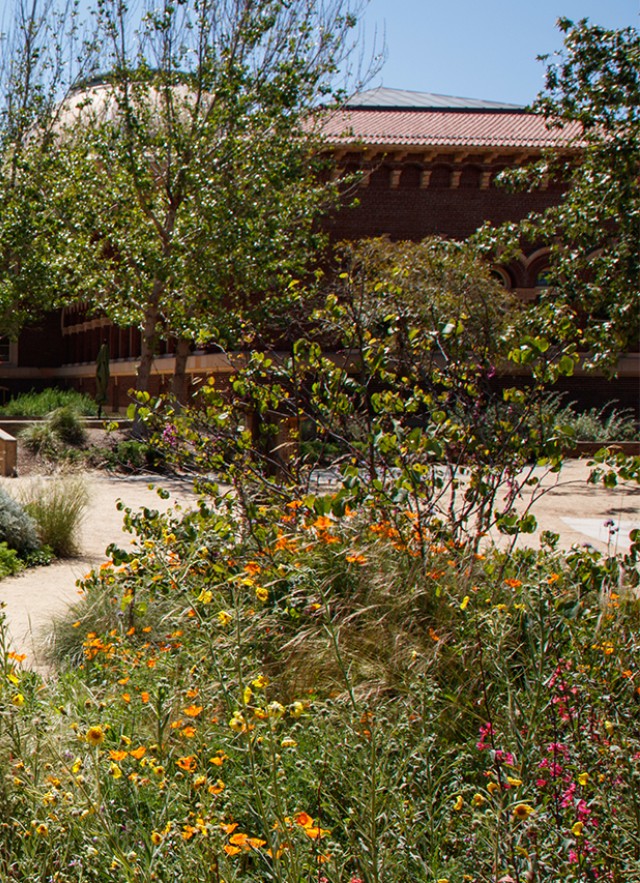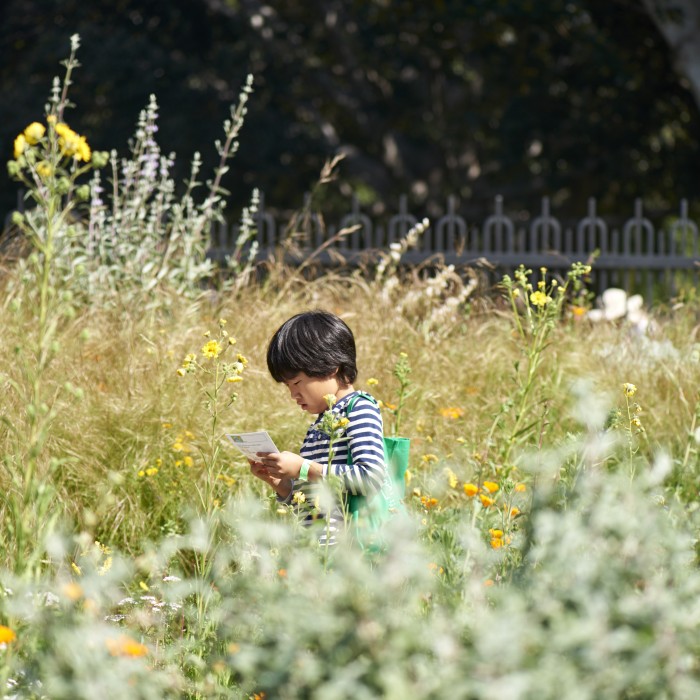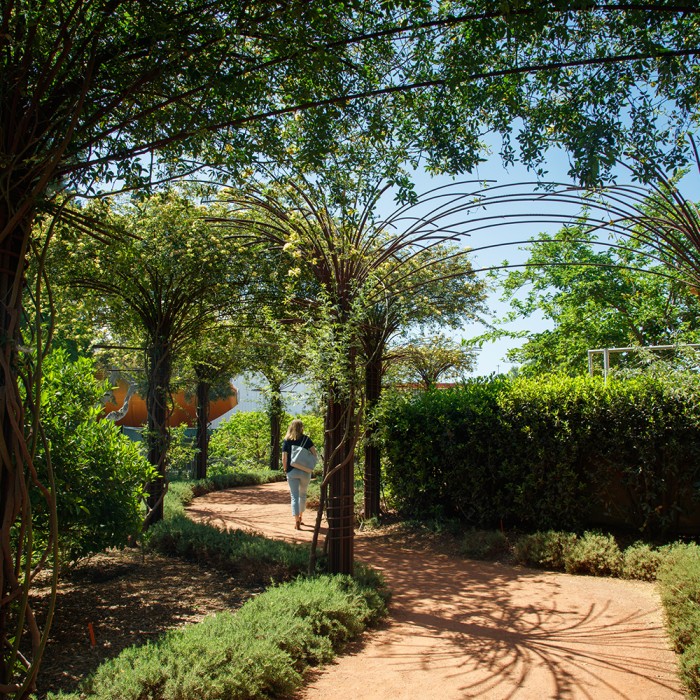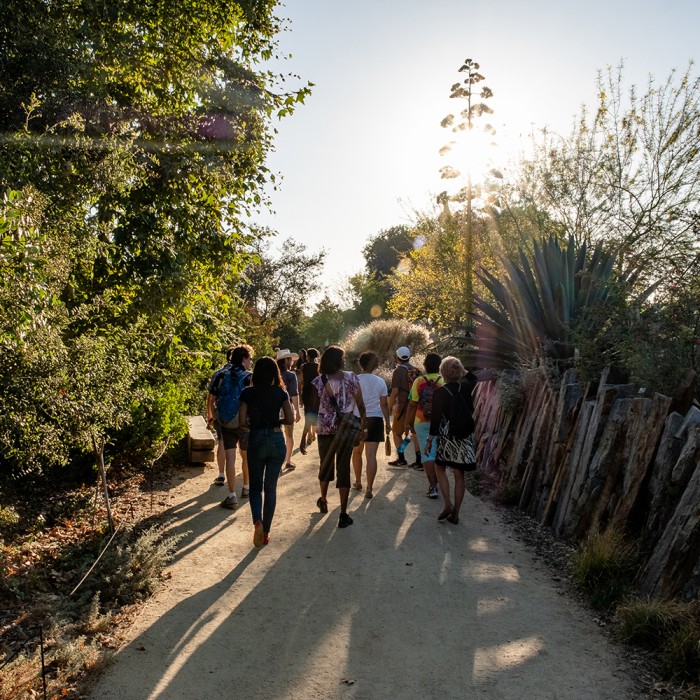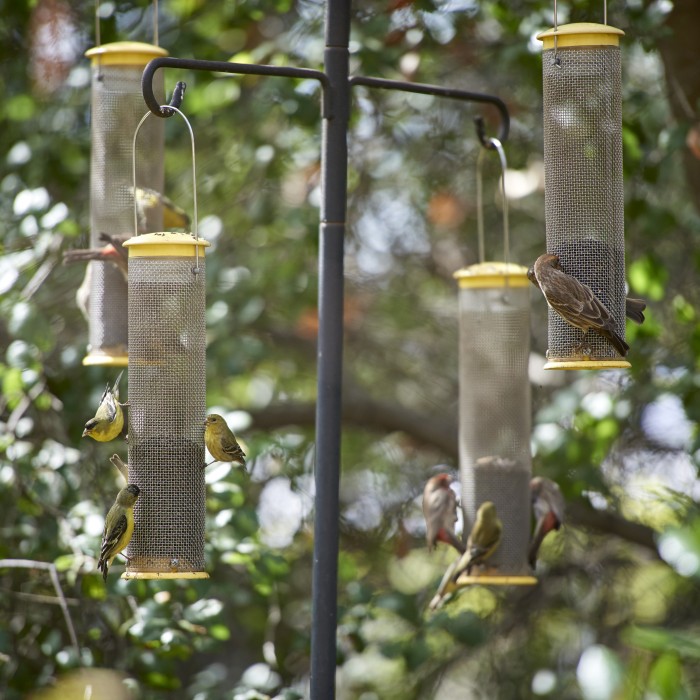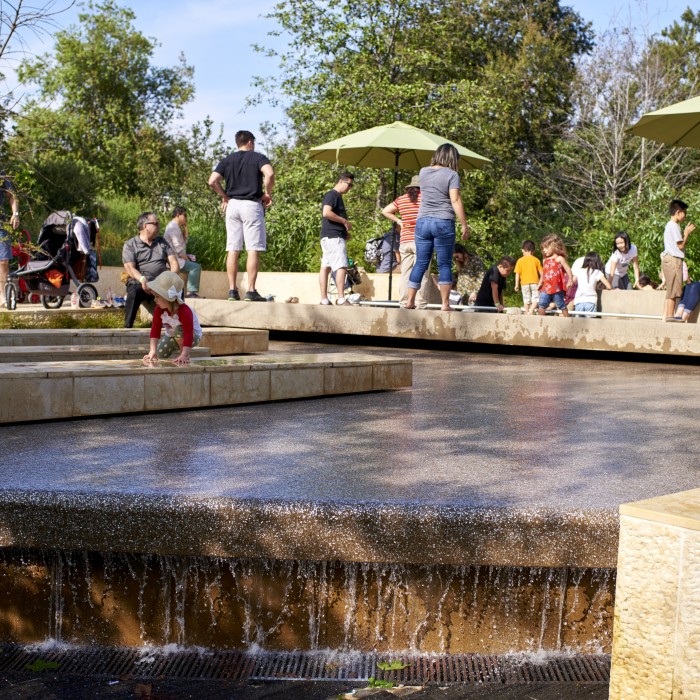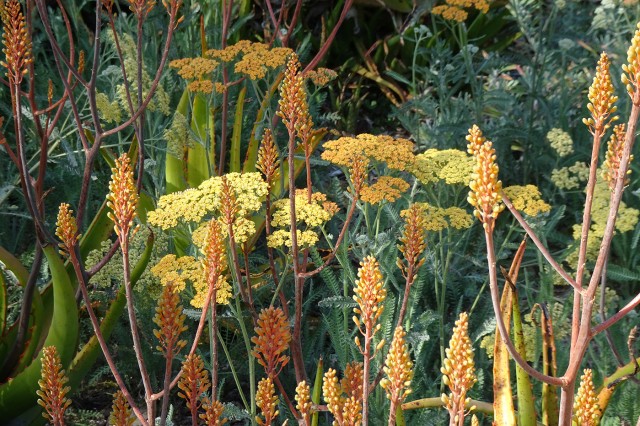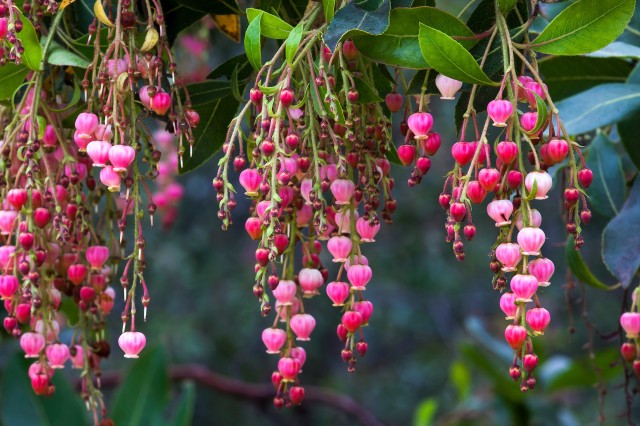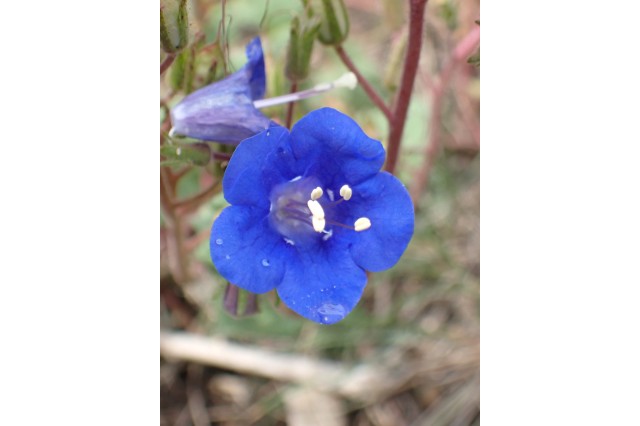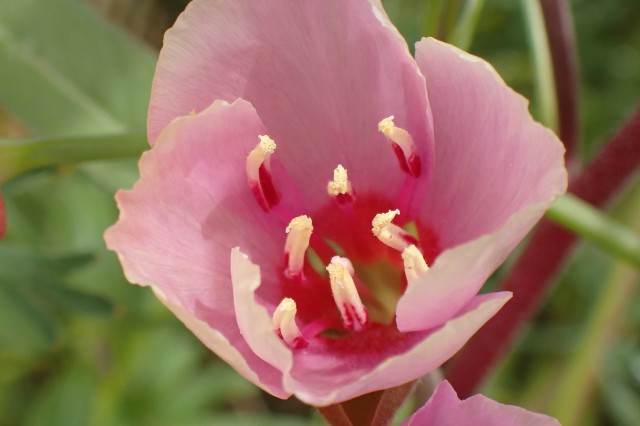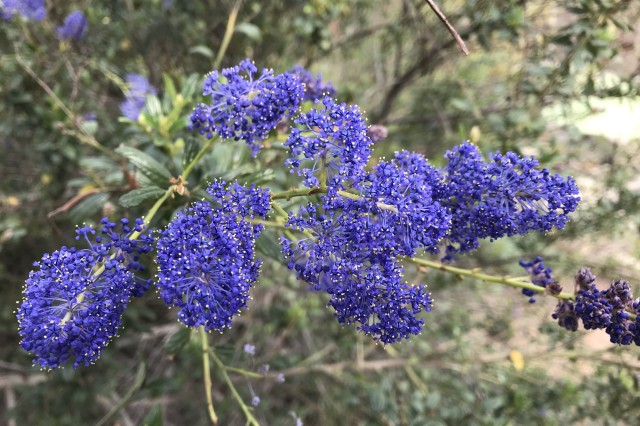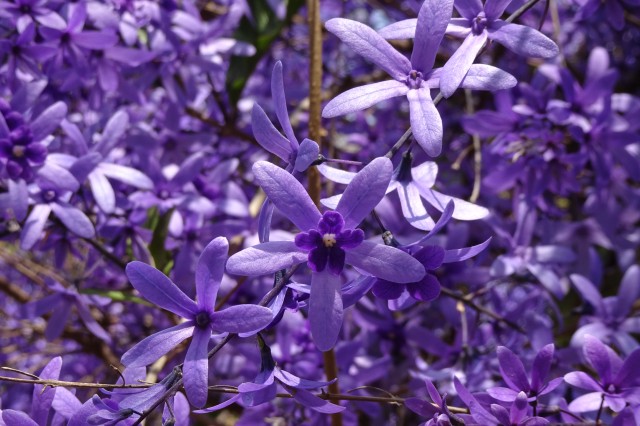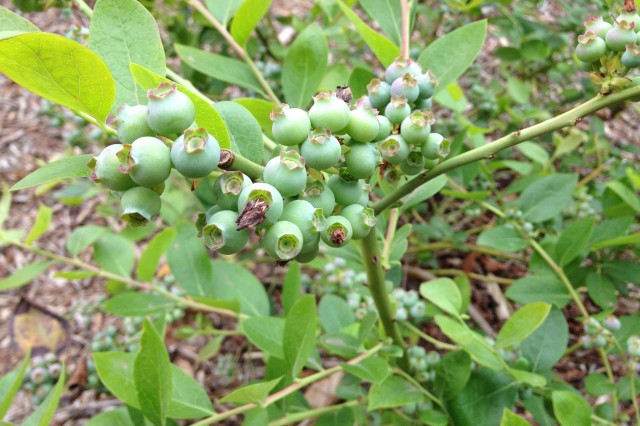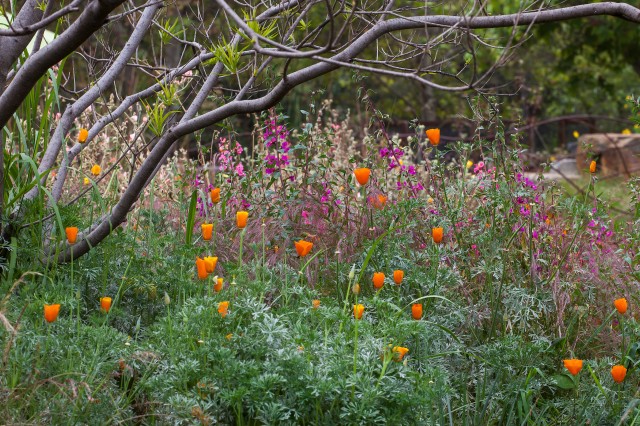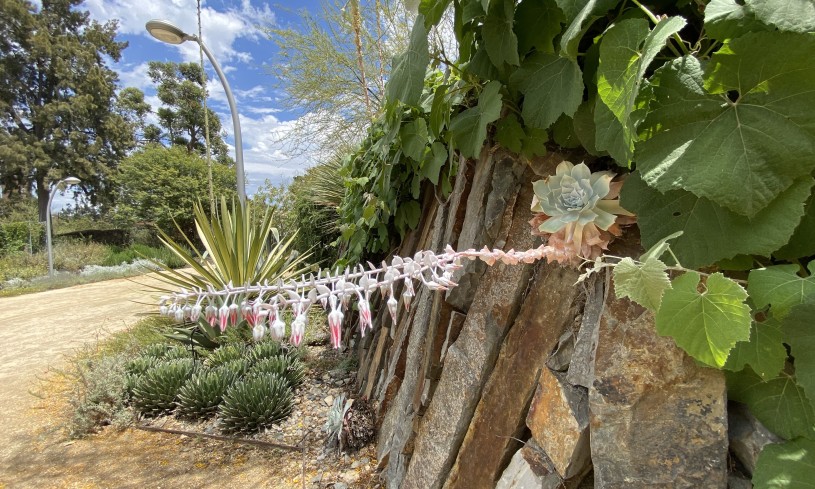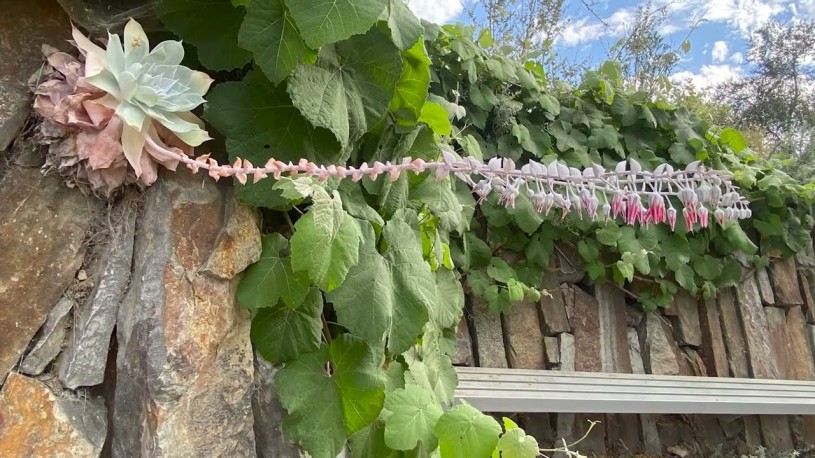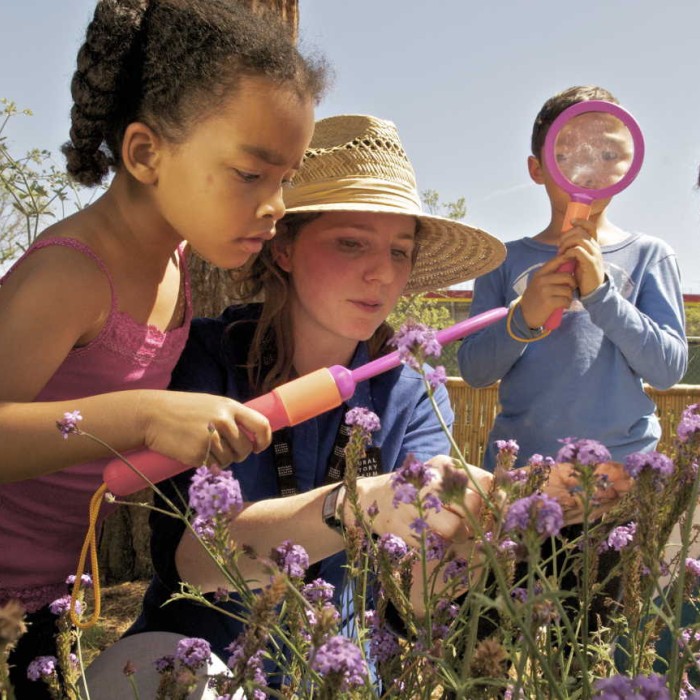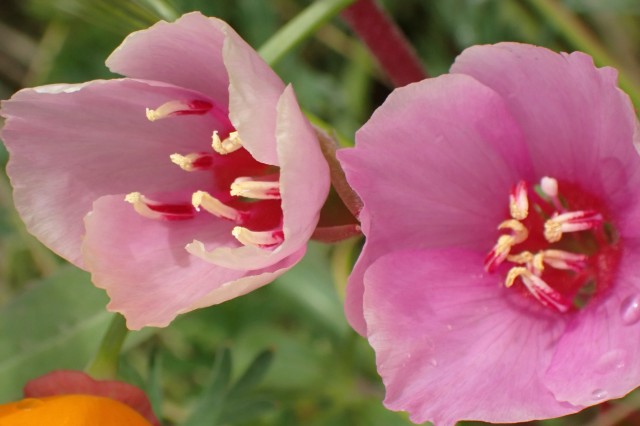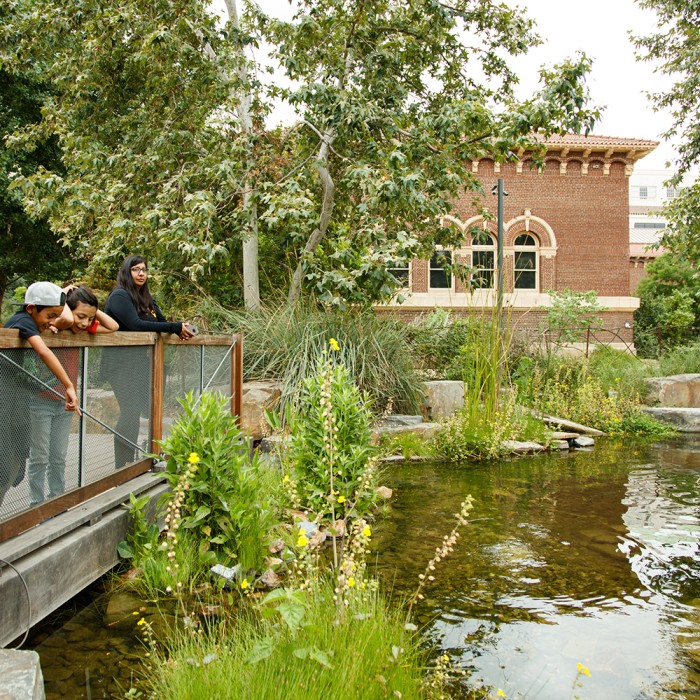
Nature Gardens
NHM's botanical wonderland features a diversity of plants that are magnets for birds, butterflies, lizards, squirrels—and humans!
Ten years ago, on June 9, 2013, we opened the Nature Gardens to the public. We bulldozed an asphalt parking lot and planted 600 species of native and nonnative plants in order to create this 3.5 acre space, mirroring the SoCal semi-arid Mediterranean climate. It was an inspired collaboration between NHM scientists and landscape architects, Mia Lehrer and Associates, who designed the Nature Gardens landscape, and a spectacular way to celebrate the Museum’s 100th birthday.
“The Nature Gardens were built as an invitation to local wildlife, through carefully selected plantings, to populate a new green space where visitors and scientists can study and experience our urban ecosystem and learn about the amazing biodiversity that surrounds us,” says Daniel Feldman, Senior Manager of Horticulture who oversees the Nature Gardens.
Encountering wildlife at the Nature Gardens can plant a seed in people. We may never discover what it grows into, but the inspiration folks take home with them has an impact on their lives and our shared home.
Explore Our Outdoor Living Room
Discover Nature's Colorwheel
Take a turn around the gardens spaces and experience a rainbow of blooms.
